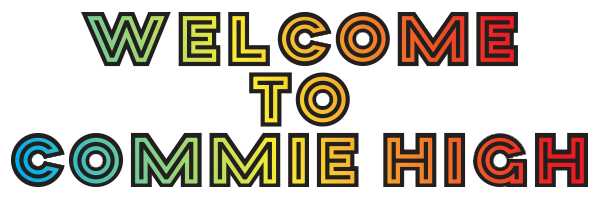WHY IT MATTERS
Public education reform is a complicated, polarizing topic that affects the lives of millions. What can we learn by looking at alternative approaches? What conditions allowed for the creation and success of the Commie High experiment in public education? And what would motivate students and parents to camp out in the cold for two weeks for an opportunity to attend a public school?
free school movement
Community High was part of the “free school” movement of the late 60s/early 70s, which led to the creation of hundreds of public schools across America built on a different, humanistic model of education. Inspired by the Summerhill school in England, these progressive schools approached school as child-centered education. This movement, however, waned by the late 70s and most of these schools were closed or converted to more traditional models. Community High School stands as one of the only remaining schools from this movement still retaining the core DNA from this educational approach.
WHY “COMMIE HIGH”
Community High School was started in 1972 with radical ideas, enthusiastic teachers, and a reclaimed elementary school building in downtown Ann Arbor, Michigan. The concept was based on a “school without walls” approach where the city could serve as the classroom. Students were encouraged to design their own courses and take responsibility for their education. There was no cafeteria, no traditional sports teams and no annual prom. The mascot? A rainbow-striped zebra. Students called teachers by their first names. Welcome to “Commie High”.
Through the 70s and 80s, enrollment was an ongoing challenge and recruiting students was critical to sustain Community High School. By the early 90s, however, it became cool to go to “Commie High” and demand to attend increased beyond its capacity. A waiting list led to a partial lottery and line-ups that grew longer each year, culminating in 1996 with a 2-week camp out by students (and their parents, siblings, friends, etc.) saving a place in line with the hope of gaining admission. This was the last line for “Commie High”, as the school system shifted to a complete lottery the following year. More than four decades since its inception, Community High School serves as one of the longest-running alternative public high schools in America.

“High school is often considered a definitive American experience, in two senses: an experience that nearly everyone shares, and one that can define who you are, for better or worse, for the rest of your life. I’m grateful I escaped the particular definition that high school would have imposed on me, and I wish everyone else who suffered could have escaped it, too.”
– Rebecca Solnit from “Abolish High School” Harper’s Magazine, April 2015
